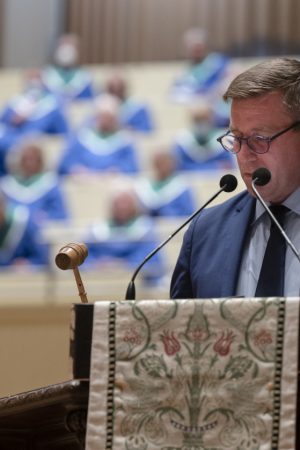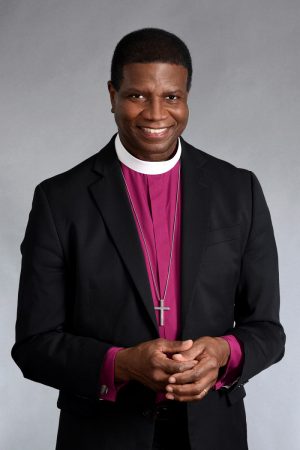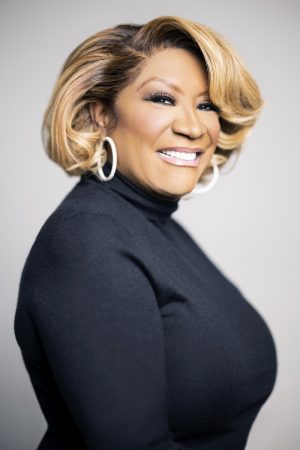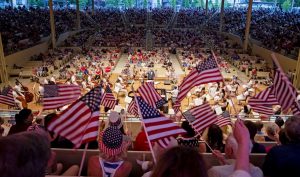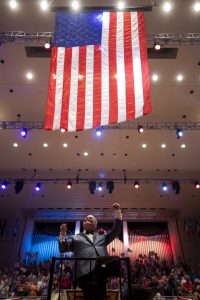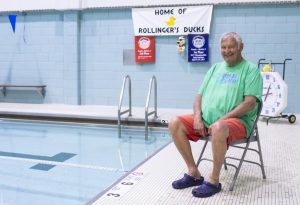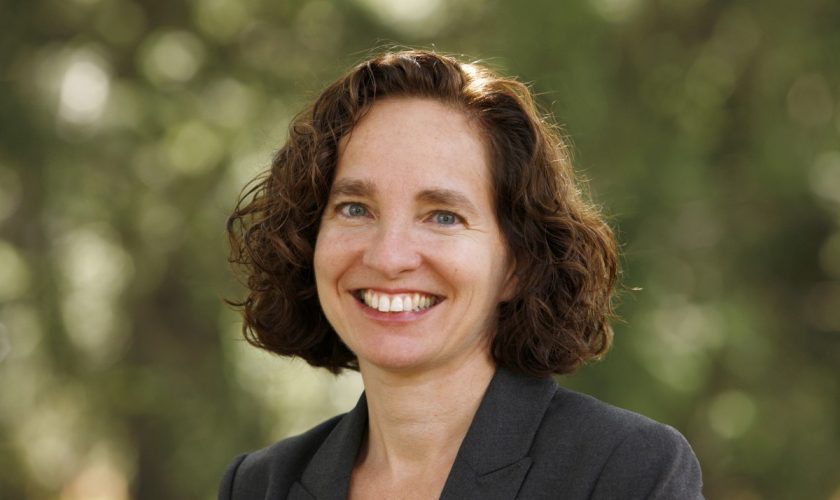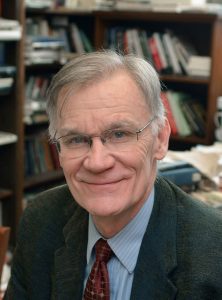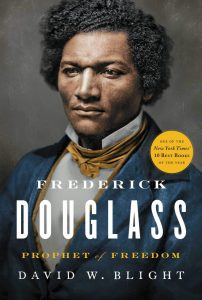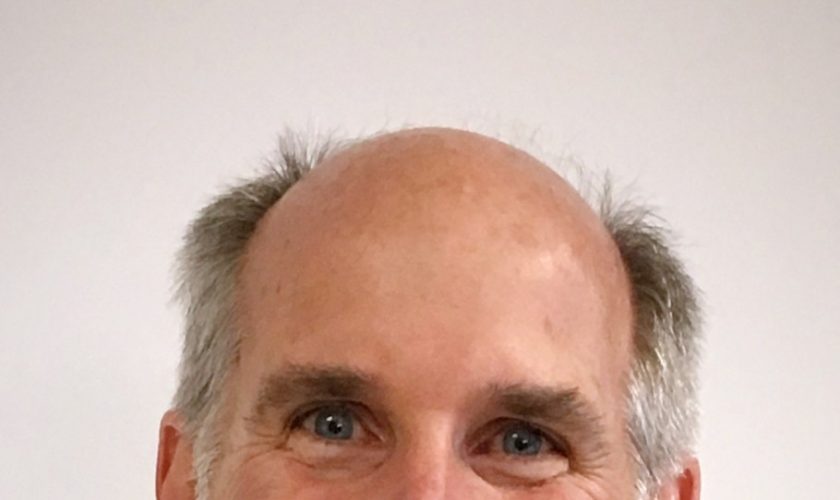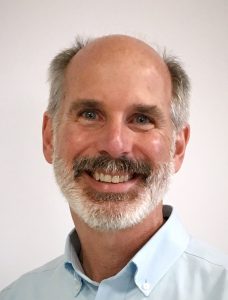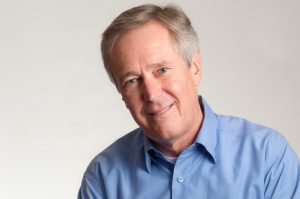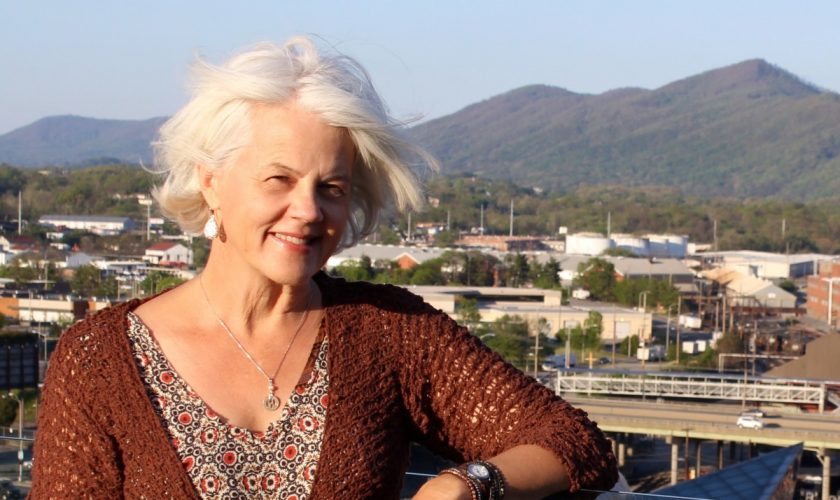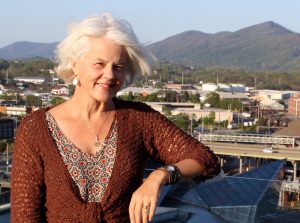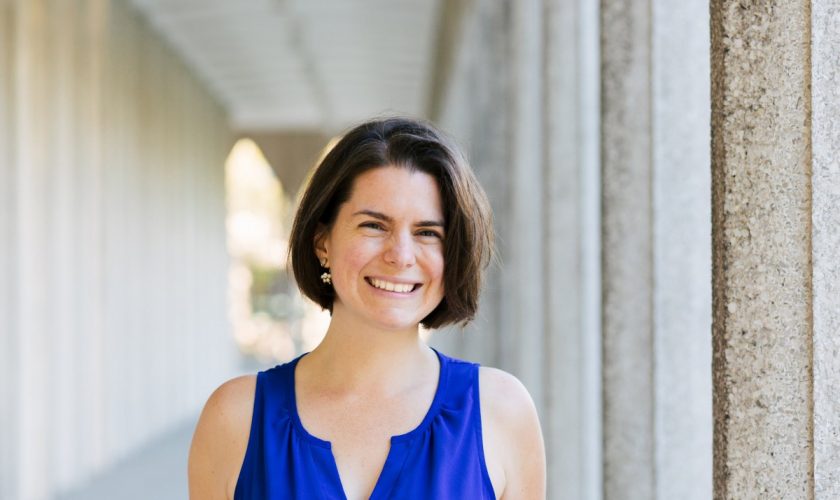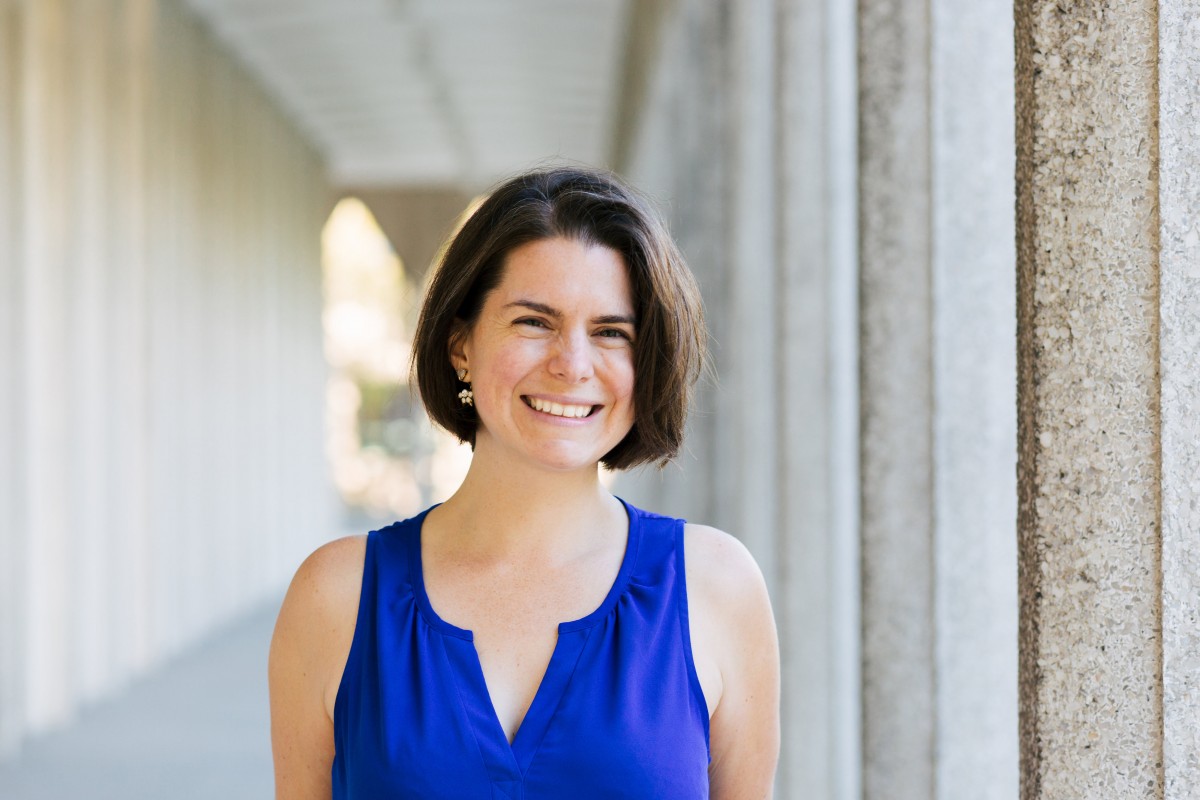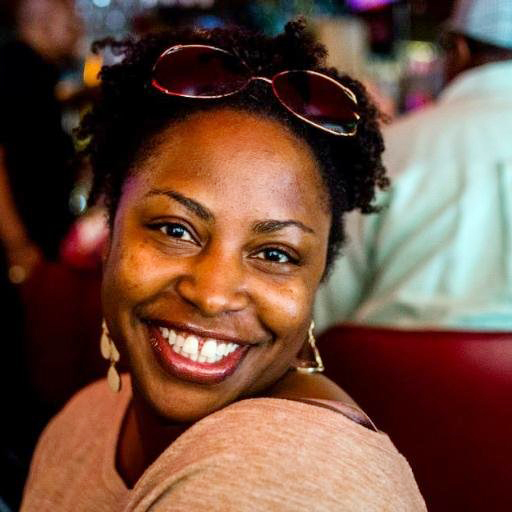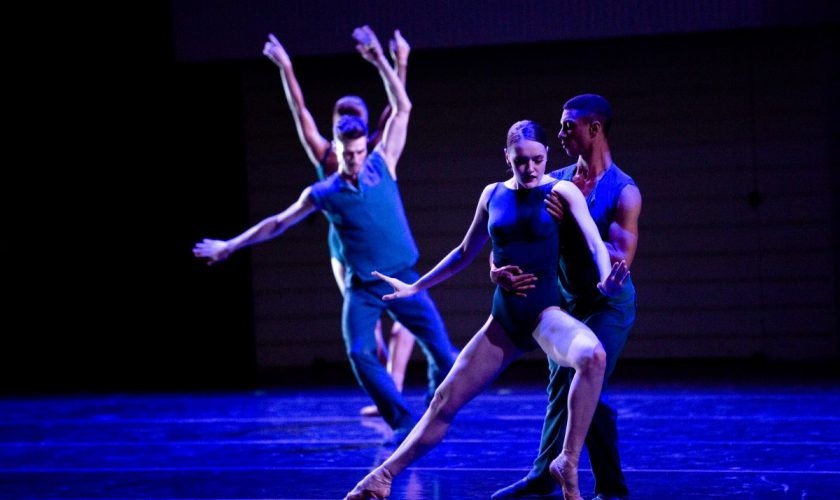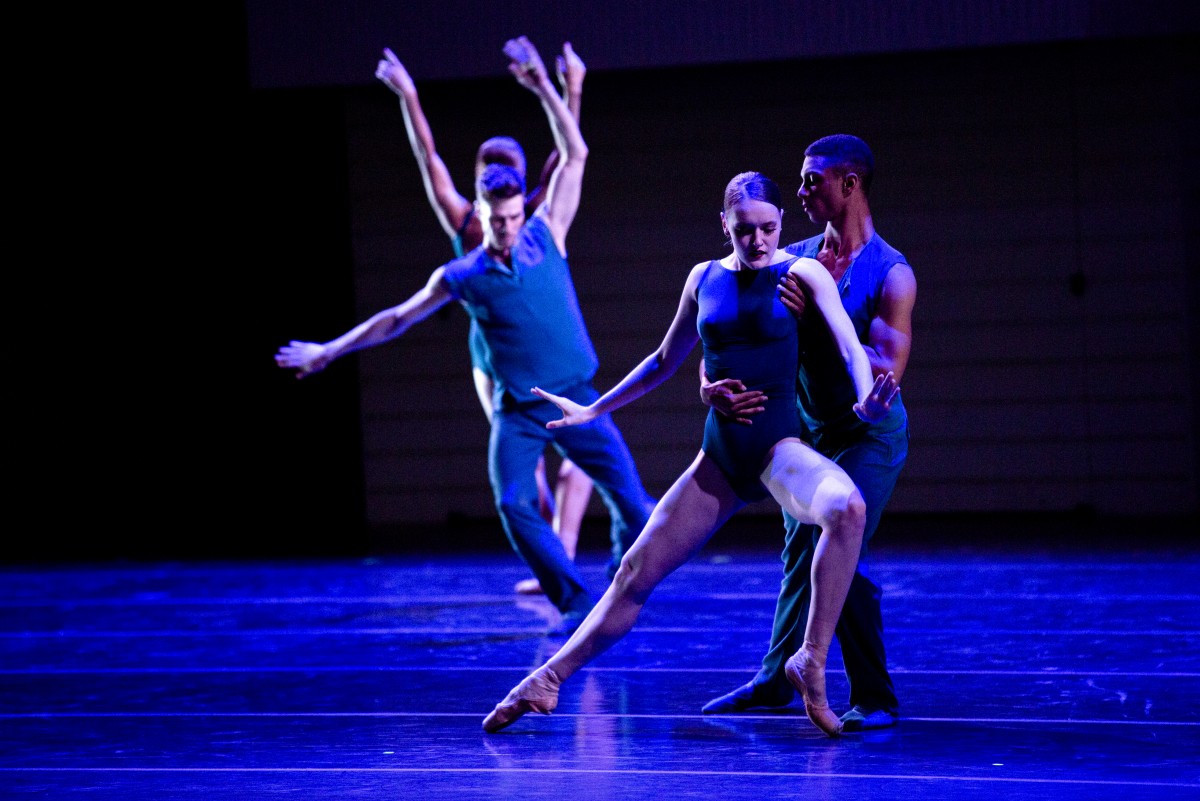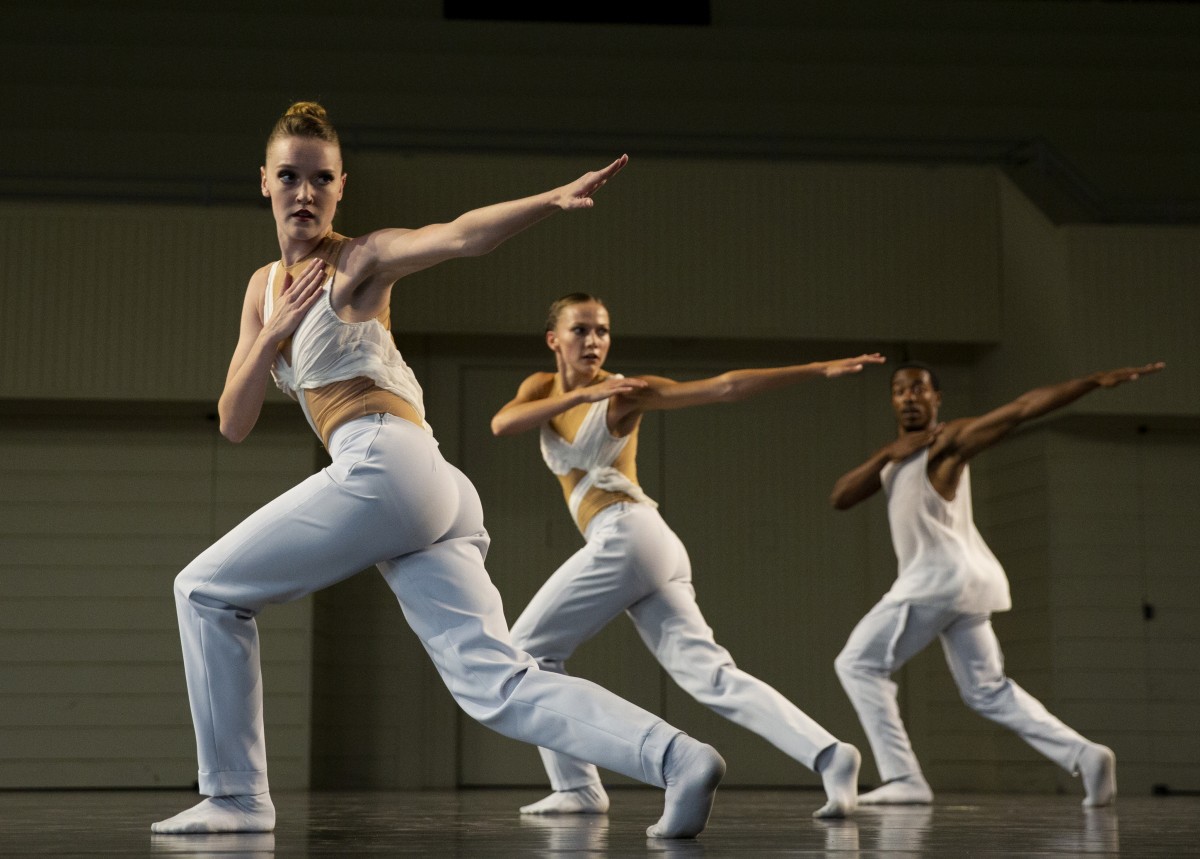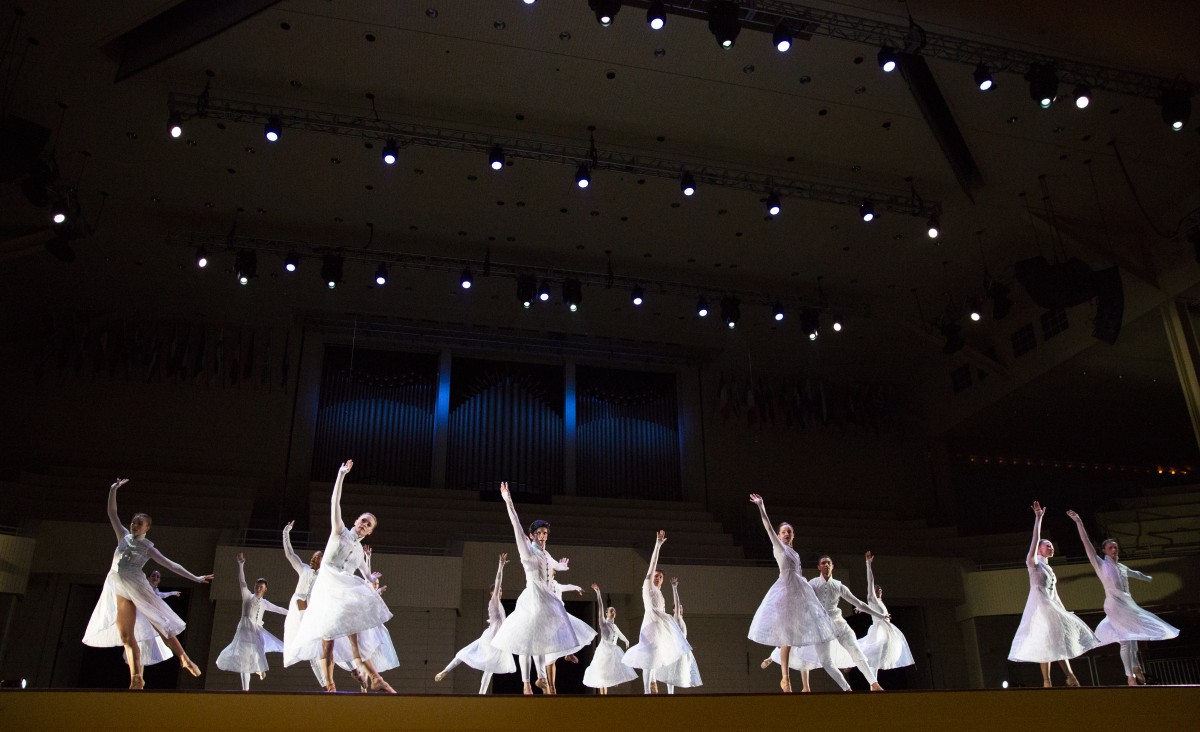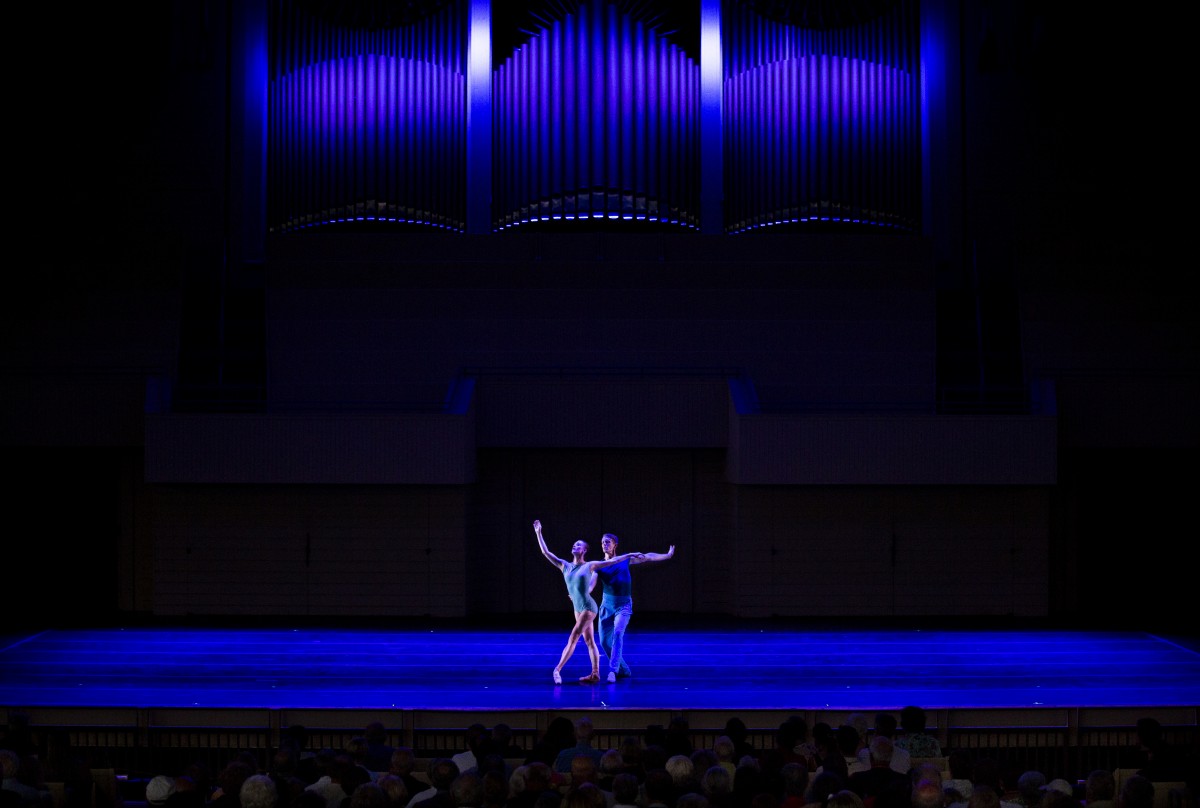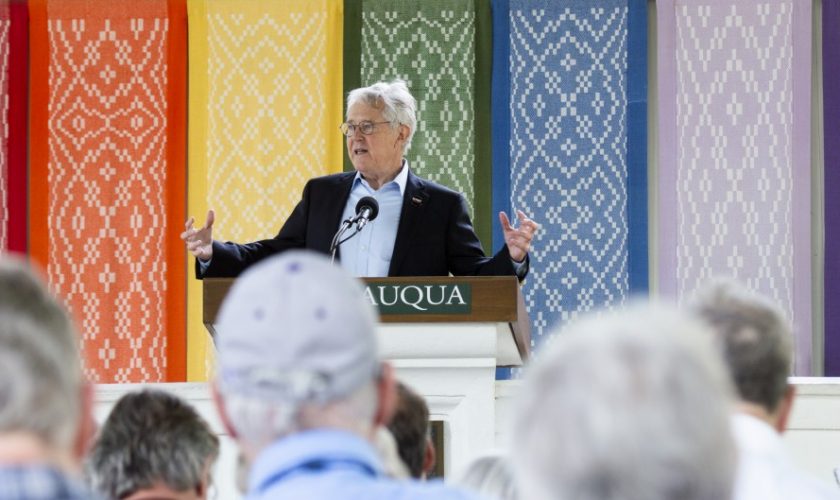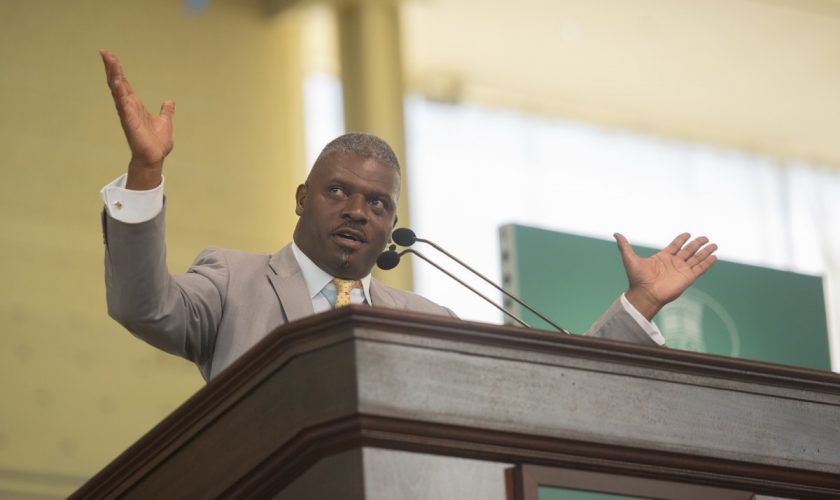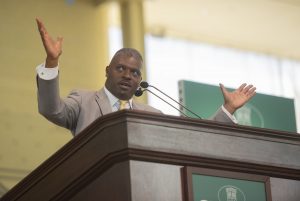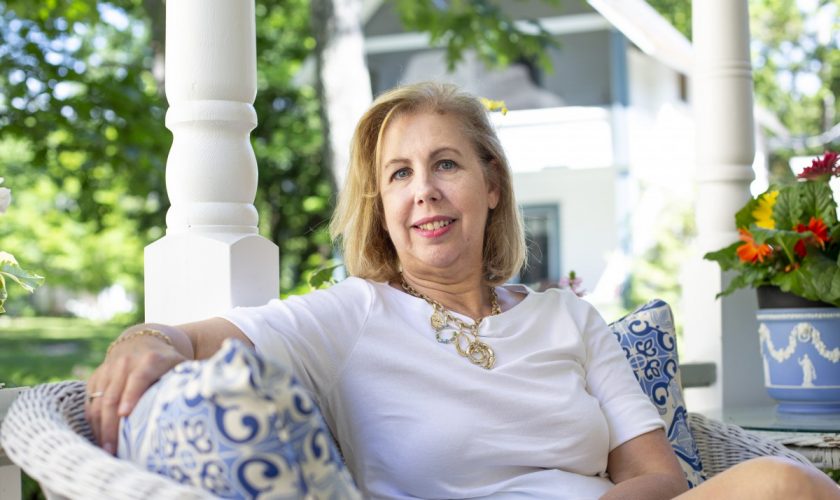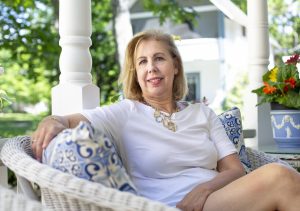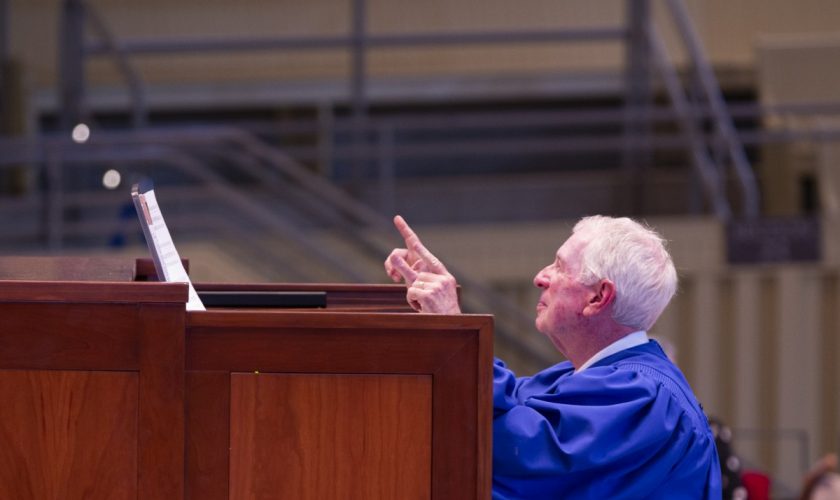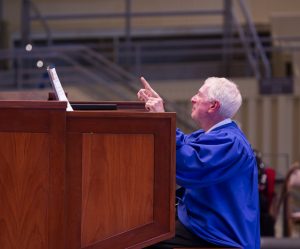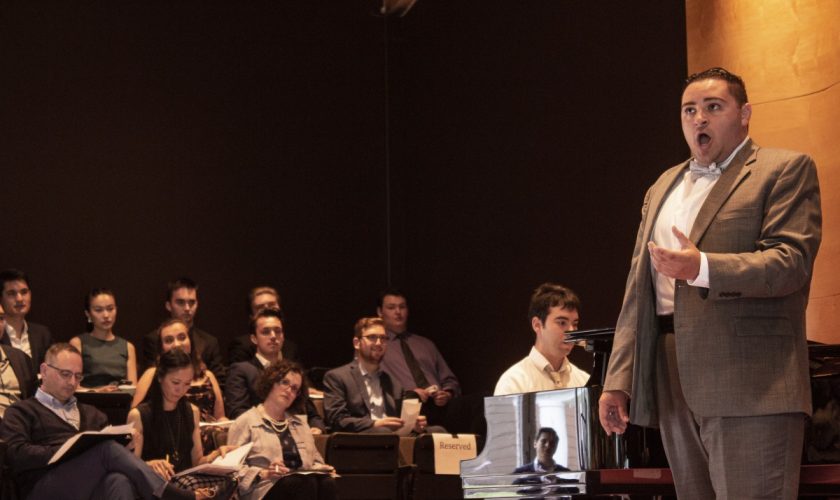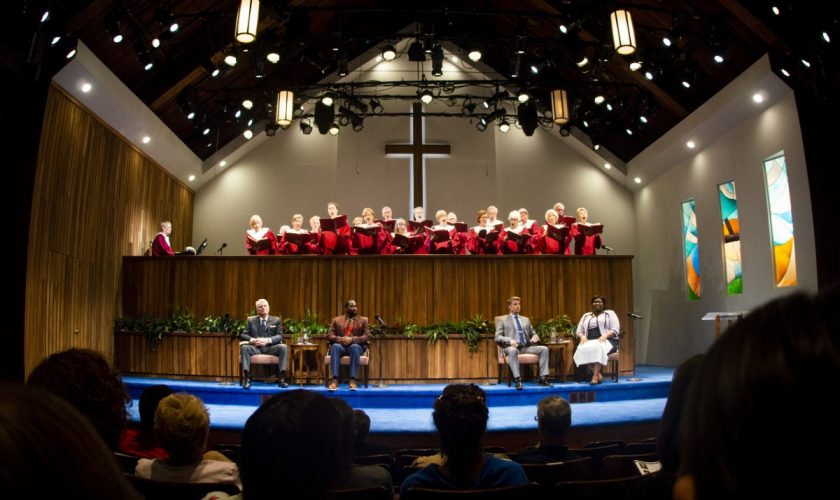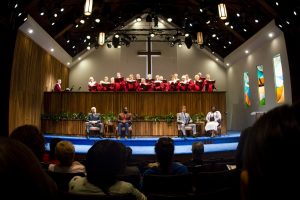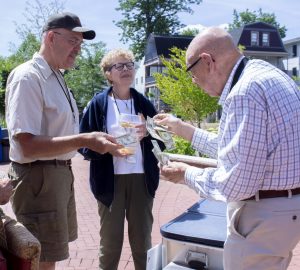
On Tuesday in the Hall of Philosophy, Judy Shepard joined James Fallows to discuss the life of Shepard’s late son, Matthew Shepard, and the importance of embracing the LGBTQ community.
Shepard, advocate for LGBTQ rights and co-founder (with her husband, Dennis) of the Matthew Shepard Foundation, suffered the loss of her son, Matthew, in October 1998, when he was robbed, beaten and tied to a fence in a hate crime commited by two anti-gay men. In her New York Times bestseller, The Meaning of Matthew, Shepard addresses Matthew’s youth, his tragic murder and his legacy.
Fallows, national correspondent for The Atlantic and co-founder of the publication’s American Futures project, facilitated the conversation as part of Week Two’s Interfaith Lecture Series, “Common Good Change Agents.”
What follows is an abridged version of the conversation between Fallows and Shepard. Their remarks have been condensed for clarity.
Fallows: Tell us what you think would be surprising to people who have only heard of (Matthew Shepard) as a public figure, about his life as a little boy.
Shepard: Well, I don’t know if there would be anything surprising. He was like any child you’ve seen or know. He was deeply involved in politics at the age of 7. He participated in his first campaign hanging those really annoying pamphlets on people’s doorknobs. He knew all about the candidates, who you should vote for and why. He knew who should win and who was going to win. He was pretty much right all of the time. He was acutely aware of how important elections are, for a 7-year-old. I was an election judge in our town in Wyoming, so maybe that’s where he figured that out. I don’t know. However, politics were his obsession in his short life.
He also loved the theater. He joined our local community theater at the age of 10. I think they were a little weary of having a 10-year-old be a part of their company, but everybody loved him. He took it very, very seriously and was the lead in many plays. He did a lot of college productions. He thought he could sing and dance, but he couldn’t. But, he was very good at interpreting drama and comedy.
He was empathetic. My mother told me, when he was 4, he was the most empathetic person she had ever met. He just knew by being around you if you were having a good day or a bad day. He would ask you about it, and he would listen. And he didn’t feel ever, at any age, that he needed to give advice. So, throughout his life, he was always selected by the student body to be a peer counselor — elementary, junior high and high school. Students really trusted him and looked up to him.
Fallows: Could you describe the process of his coming out, and how, now looking back on it, you think about it?
Shepard: So, I began to wonder if Matt was gay when he was 8. I had many gay friends in college and this wasn’t a new world to me. I never brought it up to him, though, because if I did, I knew he would retreat. So, I waited until he was ready to come out to himself and then when he was ready to come out to anybody else. When he was 18, a freshman in college in North Carolina, we were in Saudi Arabia because Dennis had work there, and Matt called me in the middle of the night and said, “Mom, there’s something I need to tell you.” It was about five in the morning, and he said, “I’m gay.”
There was never a question for me that, if this was him, I understood my role, that I should be educated and ready to help. I agreed to Matt that I would not tell Dennis that he was gay, but I told him anyway. And the reason I did was that Dennis is a lovely individual who sometimes says things without really thinking about them, and I didn’t want him to say something that would hurt Matt — not out of rejection but out of ignorance — that he wouldn’t have been able to take back in such an important moment. So, I told Dennis and he said, “No, Matt just hasn’t found the right girl yet.” That’s when I said, “No, this is about Matt finding the right man.” He knew it would take him a moment to adjust because, as parents, you map out your children’s future without really knowing it because you expect it to be like yours … and now you’re in a fork in the road. You have no idea what that other road is going to look like, and we had to rely on Matt to be that guide. We were so intent on making him feel welcome and not at all like there was a question of rejection.
Fallows: From your experience, when parents who think one of their children may be gay come to you, what do you tell them?
Shepard: There’s really no blueprint because every family has their own cultural background, religion, environment. I have had kids come to me and say they leave gay publications all over the house, but their mom just keeps putting them back in their room, and they really want their mom to ask them a question. If I had done that with Matt, he would’ve just ran. They’re waiting for mom or dad to start the conversation so you really have to know the individual, child, friend or loved one. You just have to know what works best for them. And, we usually know if someone is gay, we’re just reluctant to bring it forward because we don’t know what to do when we bring it forward. The most important thing to do is make sure they know that you are accepting of them no matter what — you may not understand, but you love them no matter what.
Fallows: For teenagers now, is there a sense that the weight, pressure and trauma both on parent and child is any less than when Matt was a boy?
Shepard: It is absolutely less because it is part of public discourse now. We see the gay community pictured in positive ways in theater, in literature and on television. “Will & Grace” — I wouldn’t exactly call that ordinary, but they’re there and they are in your home. You’re inviting them into your home. So many people of influence are coming out now. The pressure is less, but that also depends on where you live and, again, your cultural environment, religious environment. So many schools now have gay-straight alliances, but some schools don’t have that. Teachers can still get fired for being gay, but the pressure, as a whole, is much less now than it was.
Fallows: Matt’s killing happened in Laramie, Wyoming. Tell us the proper way to think about Wyoming, about Laramie, as the scene of this horrific tragedy.
Shepard: Wyoming is the eighth largest in the union but the least populated with just over 500,000 people. We are 96% white, and the opportunity to see anything but straight, white, Christian, or to express something different than that is difficult. If you go to Laramie, you’ll get three answers (about Matthew Shepard’s murder). They’ll either want to talk to you about it and tell you that the town has changed; they will not want to talk about it at all; or, lastly, you’ll get the person who believes that the story is a lie and say that the rumor ruined the town’s reputation. But that’s their fault. We are one of five remaining states without hate crime laws. With this shady reputation, it is underserved because most people in Wyoming are loving and kind, but they don’t know that they know gay people. What they do know — or think they know — is the mythology, which is a lie. And it’s hard to break through that. The only way for people to do that is to come out and tell their story. … That’s when change happens, when folks have the courage to come out and tell their stories, knowing what the consequences might be, and most of the time, they end up finding acceptance, love and are embraced. That’s the only time things get better.
Fallows: Has the fact that Wyoming was the scene of this horror made them more willing or less willing to face these issues?
Shepard: I feel like they are very defensive. I think it makes them angrier, and they blame Matt for the situation. We go out of our way to talk about how great Wyoming is … but it’s very challenging if you are not a straight, white, Christian man. The wage gap for women is the largest in Wyoming than in any of the other states, but it’s a beautiful state. But, they have their back up and say that isn’t what they’re like. Then make it better. Don’t just fight it, make it better.
Fallows: Tell us how Wyoming responded to this crime institutionally.
Shepard: We were, in retrospect, extremely fortunate. There were so many moving parts to finding Matt and finding the killers, and it happened in a small amount of time. I was included in much of the trial preparation, the investigation, and they told me as much as they could. They didn’t want me to be surprised. They were just so kind and very intent on making Dennis and I feel like we were a part of their family. They actually had to furlough many employees because it was not in their budget to work with us. And some of them underwent transformations from being your typical, homophobic Wyoming cowboys to strict, strong advocates for the gay community. The prosecutor couldn’t have been more kind and understanding. We felt like the people called on to do the right thing, did the right thing. Since then, we have found out some were not in favor of us, but at the time, they took very good care of us. They were professional and extremely careful in their words.
Fallows: Tell us how your thoughts on the death penalty have evolved over the last 20 years.
Shepard: James Byrd Jr. was murdered in June 1998. We spent time with Matt that summer, and we talked about how these white supremicists did something so deplorable. They tricked him into believing they were all friends and then dragged him to his death by a truck. In Texas, where the trials took place, they carry out the death penalty. We had a conversation that, sometimes, when there is no question of guilt, in certain human beings, this is what they are inviting. We felt that about the three men involved in the murder of James Byrd.
The first person in (Matthew’s) trial changed his plea from not guilty to guilty; he had a hearing, and the judge sentenced him to two consecutive life sentences. When the second individual came to trial — he had an actual trial — he was found guilty and made eligible for the death penalty by Wyoming statute, and it was up to the jury to make this recommendation. We had a conversation with the prosecuting attorney about how we felt about the death penalty because in the statutes this is what is required.
When the verdict came back guilty and the second young man was made eligible for the death penalty … Dennis and I said we will accept the same sentencing as the other young man with no appeal. I was pretty much, in the beginning, the only one who wanted to do that, and I wanted to do it because I wanted it to be over. I knew that if we went ahead with the death penalty sentencing there would be endless appeals — mandatory appeals — and we would be running into him all the time. … I just wanted it to be over. We talked about it. I won, reluctantly, and the rest of them agreed because, while they felt that this one young man totally deserved what would happen to him, we all understood this is what had to happen. Taking another life wasn’t going to solve anything.
Any notion that this was about mercy is misplaced because (the second man on trial) was 21. I mean, he’s going to spend the next 40 to 50 years in prison. In prison. They’re just gone, they’re just gone. Which is fine with us. This is not the 1920s, ’30s and ’40s of Nazi Germany. My son died because of your ignorance and intolerance. I can’t bring him back, but I can do my best to see that this never ever happens to another person or another family again.
Fallows: Tell us how you and Dennis are doing that through your foundation.
Shepard: Well, we started the foundation six weeks after Matt passed, on his birthday, Dec. 1, 1998. We had received so much correspondence while Matt was in the hospital and afterwards of people sending us money. … We wanted to make the money make a difference. So, we started this nonprofit, the Matthew Shepard Foundation. We had no idea what we were going to do with it because we only thought we’d be in existence a couple of years. People have a tendency to move from one tragedy to another. So we created this foundation. It’s morphed into many things over the last 20 years based on what my very small staff thinks we need.
Because of the current political climate … we have started conducting hate crime conferences trying to explain the federal hate crime law named after Matt and James Byrd Jr, what it does and doesn’t do and how important it is for victims of hate crimes to report it so that people who can do something about it know where it’s happening and why. We find there’s a deep-seated mistrust of law enforcement nationwide in that regard. We read about it in social media and in the press all the time, but that’s because that’s what makes the press. There are great cops, and they want to do the right thing, but they need help. They need the community’s help.
Fallows: What is the landscape of organized religion when it comes to the causes of your foundation?
Shepard: In the 20 years since we’ve been doing this, we’ve seen such a magnificent change. However, we do not work with interfaith agencies directly. Many of our conferences include interfaith because we feel it’s important; we feel all of these pillars are important in the work that we do to educate on a broad scale. So, we try to include them in everything we do, but we don’t work with them directly.
Fallows: I work for The Atlantic magazine. We had an article last week by a gay male writer in his mid-30s who was looking back on Stonewall and essentially saying, “Boy, for people of my generation, there’s no problem anymore. You know the discrimination is all melted away.”
Shepard: Oh, you’re just so wrong. What bubble do you live in? All you have to do is go to middle America and you will find that is not what it is like. Come to Wyoming. It is not all OK. Go to Western California. It is not OK. There is so much left to do, and so much of that relies on changing hearts and minds — people coming out and telling their stories so everybody knows who they are and where they are. That is just critical. … In this country, the work is definitely not over.


